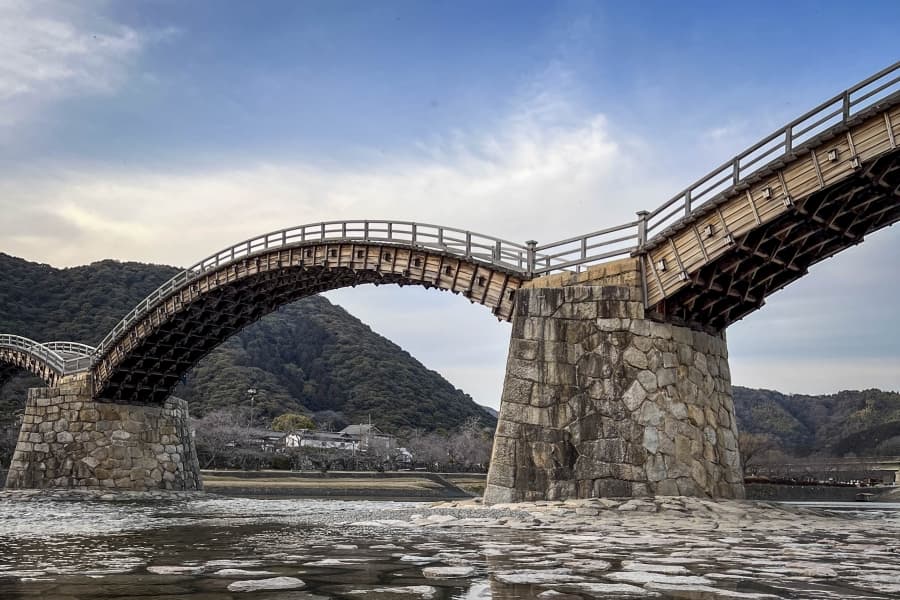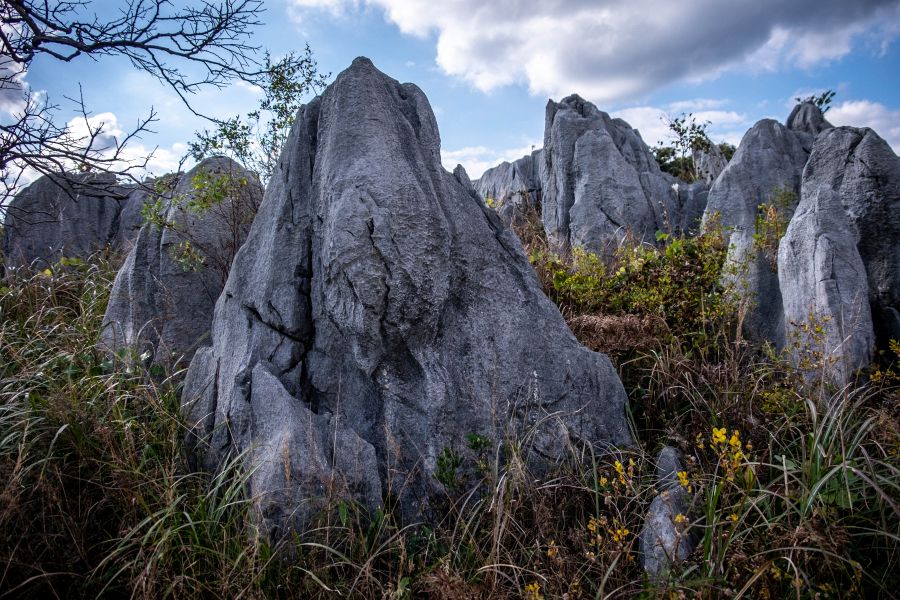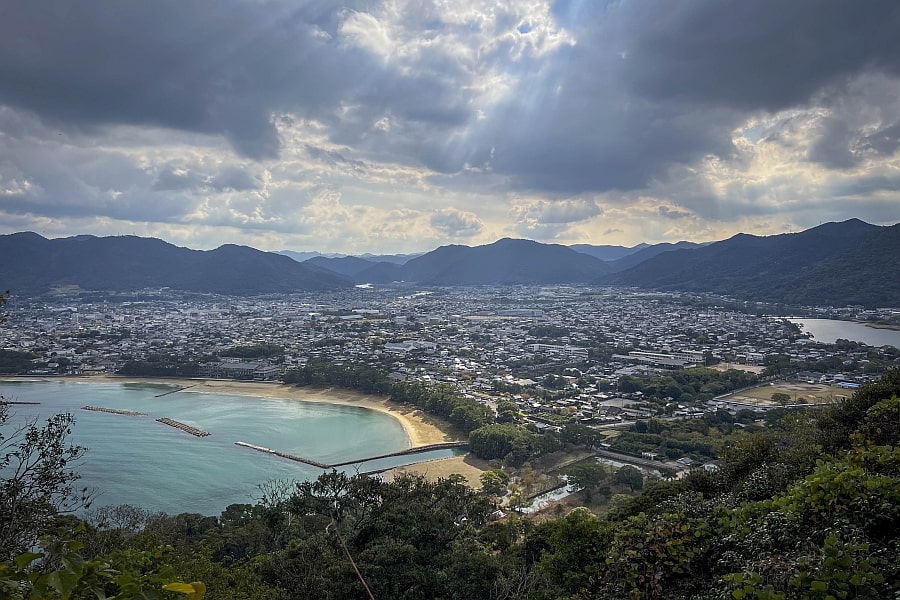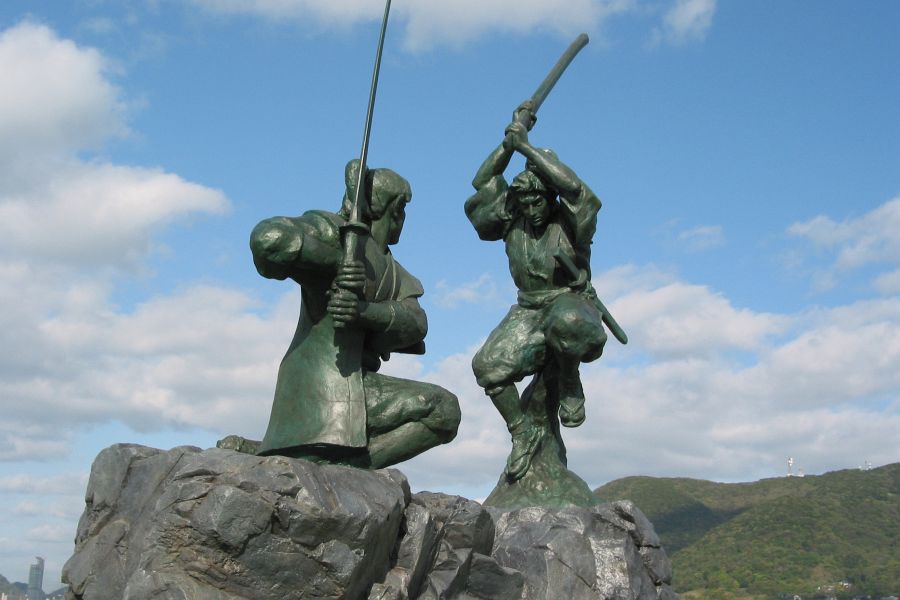SETOUCHI TOURS
Yamaguchi City
Yamaguchi once rivalled Kyōto for the sophistication of its culture.
Home » Yamaguchi City
Yamaguchi City
Yamaguchi city is the capital city of Yamaguchi Prefecture, located almost in the centre of the prefecture. The city is home to some striking buildings of various periods.
What to see
Kōzan Park
Name in Japanese: 香山公園
Pronunciation: kō-zan kō-en
This park is located on the northwest side of Yamaguchi city and comprises a temple complex and historic sites.
Rurikō-ji Temple
Name in Japanese: 瑠璃光寺
Pronunciation: ru-ri-kō-ji
Rurikō-ji is a Buddhist temple within Kōzan Park. To the right of the park entrance stands the temple’s five-storey pagoda. Built in 1442, it’s considered one of the best three pagodas in Japan. It was commissioned by Ōuchi Morimi as a memorial to his older brother Yoshihiro, who died leading a revolt against the shogunate in 1399. The pagoda is reflected in the pond of a garden. The main hall of the temple faces the entrance to the park. In front of the main hall is a giant wooden rice scoop and wooden pestle. These symbolise the merciful heart of Buddha and his commitment to wear himself out scooping people up to save them. The temple is dedicated to the Buddha of healing. In the temple grounds is a small museum with models of the five-storey pagodas in Japan.
Mōri Mausoleum
Name in Japanese: 香山墓地
Pronunciation: kō-zan bochi
To the right of Rurikō-ji Temple is the mausoleum of the Mōri clan, the lords of Chōshū in the Edo Period. It was created after Mōri Takachika, the 13th lord of the domain, moved his residence from Hagi to Yamaguchi. He died in Yamaguchi in 1871 and was buried here. The cemetery also holds the graves of his son Motonori and grandson Motoakira, as well as their wives. If you clap your hands or stamp your foot on the stone path leading to the tombs, the steps return an echo said, with extreme poetic license, to resemble the cry of a bush warbler (actually a sharp pinging sound).
Statue of Ōuchi Hiroyo
Name in Japanese: 大内弘世像
Pronunciation: ō-uchi hiro-yo zō
In front of Rurikō-ji Temple is a mounted statue of Ōuchi Hiroyo, the 24th head of the powerful Ōuchi clan during the Middle Ages who, as a leading vassal of the Muromachi shogunate, spent a lot of time Kyōto. He developed the city of Yamaguchi in imitation of Kyōto and sought to make his city as culturally sophisticated as the capital.
Chinryūtei and Rōzandō Tea House
Name in Japanese: 枕流亭 露山堂
Pronunciation: chin-ryū-tei and rō-zan-dō
These two small buildings were moved to the park from other places for conservation reflecting their historic importance. Both were used by representatives of the Satsuma and Chōshū domains to plot the overthrow of the shogunate and restore the Emperor of Japan.
The following places are not within Kōzan Park
Jōei-ji Temple
Name in Japanese: 常栄寺
Pronunciation: jō-ei-ji
A Zen temple, Jōei-ji is known for its garden, Sesshutei, built by monk, painter, and gardener Sesshu. The garden is physical embodiment of one of Sesshu’s painted landscapes. It was completed about 500 years ago. You can stroll around Sesshutei or view it from the main hall of the temple. There are also raked stone gardens and exhibits about the people who precipitated the Meiji Restoration.
Xavier Memorial Church
Name in Japanese: 山口サビエル記念聖堂
Pronunciation: yamaguchi sabieru kinen seidō
In 1952, a Catholic church was built in Yamaguchi to commemorate the 400th anniversary of Spanish missionary Francis Xavier’s arrival in Japan. It burnt down in 1991 and was rebuilt in 1998 using donations from citizens. The modern design represents a large tent. It houses a museum of exhibits related to Xavier’s life and the development of Christianity in Japan. Steps from the church carpark lead up to Kameyama Park which offers a panoramic view over the city.
Former Prefectural Office and Assembly Buildings
Name in Japanese: 山口県旧県会議事堂 山口県旧県庁舎
Pronunciation: yamaguchiken-kyū-ken-kaigiji-dō yamaguchiken-kyū-ken-chōsha
In front of the current Prefectural Office and Assembly Buildings stand their two magnificent predecessors built in 1918 in the Taishō period, before elegance and ornamentation were replaced by brutalism in public buildings. Both can be entered free of charge.
Yuda Onsen
Name in Japanese: 湯田温泉
Pronunciation: yu-da on-sen
This hot spring resort with its onsen ryokan is located in the middle of Yamaguchi city. Various images of foxes grace the area. According to legend a white fox bathed its injured leg in a pond of warm water at a local temple. The monk asked a farmer to dig a hole there out of which gushed the hot spring, along with a gold statue of Yakushi, the Buddha of healing. Bathing in the spring and worshipping Yakushi is said to cure every disease.
Sakamoto Ryōma and other heroes of the Meiji Restoration visited the hotel Matsudaya in Yuda Onsen to discuss an alliance of their respective domains with a view to overthrowing the Shogunate.
Gensai-ji Temple
Name in Japanese: 玄済寺
This small Zen temple stands on the fringes of Yamaguchi city. It was the family temple of a cadet branch of the powerful Mōri clan, the Yoshiki Mōri, whose graves dot the hillside behind the temple. Gensai-ji has some highly expressive Buddhist statuary. You can practice seated Zen meditation in the zazen hall.
History
Yamaguchi was once part of the ancient Suō Province. During the Muromachi period it was ruled by the powerful Ōuchi clan, who ruled over six provinces in the Setouchi region at the height of their influence. They claimed descent from the royal house of Baekje in Korea and became wealthy through trade with Korea and Ming China. When Kyōto was destroyed in the Ōnin War, the Ōuchi welcomed its fleeing intellectuals, establishing Yamaguchi as a cultural centre. In 1551, the Portuguese Jesuit missionary Francis Xavier stayed in Yamaguchi converting many to the Kirishitan faith. Eventually the Ōuchi clan were overthrown by their vassals, the Mōri, who ruled the area as part of Chōshū Domain during the Edo Period.
Previous
Next
Information
Name in Japanese: 山口市
Pronunciation: yama-guchi-shi
Address: Yamaguchi, Yamaguchi
Related Tours

6 Days
¥498,000
This tour visits the major sights of Yamaguchi, Shimane, and Hiroshima prefectures, focusing on the small historic cities of each region, and the natural wonders found in the countryside between them.


